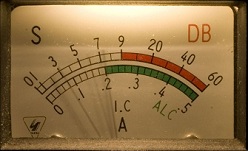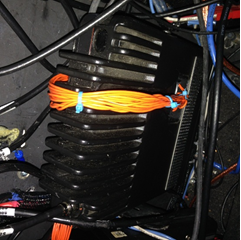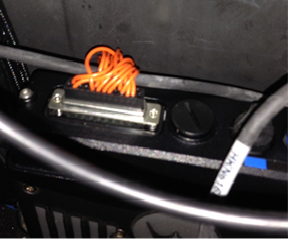Several months ago, I stumbled upon an eBay special on VRS-750’s. I picked one up for $50 – at that price, it was worth having a backup on the shelf. Another guy picked one up, and it had a service tag on it indicating that it had a functional issue. Guess it was luck of the draw. The real issue I ran into was that the VRS shipped with no cable – so I had no way to connect it to anything, unless I took the cable of my existing VRS.
Several months later, a deal popped up on 800 MHz XTL5000 radios – now I had a purpose for a second vRS, but I still had no cable. These weren’t available on eBay at the time, nor could I find a part number to order them from a place like WisComm.
I did a fair amount of internet searching, when I stumbled across this Batlabs post .
To summarize, the following data was provided on the cable:
From 68P81094C84-O – VRS750 to mobile cable HKN6153A
| P102 (VRS750 DB25 Connector) | Spectra Accessory (“Legacy” connector on XTL/APX) Connector | Signal name |
| 1 | N/C | |
| 2 | 2 | Fil audio grd |
| 3 | N/C | |
| 4 | N/C | |
| 5 | 5 | bus+ |
| 6 | 6 | flt audio |
| 7 | 7 | rx audio |
| 8 | 8 | tx audio |
| 9 | N/C | |
| 10 | 10 | agnd |
| 11 | 11 | mic lo |
| 12 | 12 | mic hi |
| 13 | N/C | |
| 14 | 14 | bus- |
| 15 | N/C | |
| 16 | N/C | |
| 17 | N/C | |
| 18 | 18 | dgnd |
| 19 | 19 | reset |
| 20 | N/C | |
| 21 | 21 | bus gnd |
| 22 | 22 | swb+ |
| 23 | 23 | busy |
| 24 | N/C | |
| 25 | N/C |
I did some basic EMI analysis while building the cable – I suspect some of the wires would have been shielded with internal shields on the real cable… all I had was a spool of 20 gauge wire and some connectors… but I took some time to protect the audio lines as best I could without having shielded wire on-hand.
| P102 (VRS750 DB25 Connector) | Spectra Accessory (“Legacy” connector on XTL/APX) Connector | Signal name | Build Notes |
| not populated | |||
| 2 | 2 | Fil audio grd | twisted with pin 6 |
| 3 | not populated | ||
| 4 | not populated | ||
| 5 | 5 | bus+ | twisted with pin 14, 21 |
| 6 | 6 | flt audio | twisted with pin 2 |
| 7 | 7 | rx audio | twisted with pins 8,10 |
| 8 | 8 | tx audio | twisted with pins 7, 10 |
| 9 | not populated | ||
| 10 | 10 | agnd | twisted with pins 7,8 |
| 11 | 11 | mic lo | twisted with pin 12 |
| 12 | 12 | mic hi | twisted with pin 11 |
| 13 | not populated | ||
| 14 | 14 | bus- | twisted with pins 5, 21 |
| 15 | not populated | ||
| 16 | not populated | ||
| 17 | not populated | ||
| 18 | 18 | dgnd | |
| 19 | 19 | reset | |
| 20 | not populated | ||
| 21 | 21 | bus gnd | twisted with pins 5, 14 |
| 22 | 22 | swb+ | |
| 23 | 23 | busy | |
| 24 | not populated | ||
| 25 | not populated |
It may not seem like much, but even 3 twists per meter of cable (more for shorter cables) will provide significant reduction in coupling onto cables form other systems (like the 1010W XTL5000 and antenna mounted only 3 feet from this short cable). I am only guessing at the “twists per meter” for the short cable I built, but it’s likely on the order of 60 twists per meter or so. Using the formula for wire twist rejection, from “EMI Control Methodology and Procedures” by Don White, I calculate the twisting rejection to be:
| Freq | Rejection |
| 150 MHz | 27 dB |
| 450 MHz | 21 dB |
| 800 MHz | 16 dB |
This shielding is not as good as a shield would provide, but it’s a lot better than letting the wires sit in the field with no protection. Additionally, since the sensitive lines all have a high and low, or a high, low, and shield, this indicates that they are balanced lines, so the overall system will have some natural immunity to common mode coupling, which will be the primary coupling method, since BOTH wires will be exposed to the interfering field. Single ended wires, or wires simply referencing ground will be far more susceptible to interference from adjacent transmitters.
The end result stands out a bit, since I use orange wire for things like this (this is not intended as a permanent fixture at this point, but should work for quite some time), but the VRS communicates acceptably with the radio, and seems to operate fine, though I have not performed a dull operational checkout of it. I know transmit and transmit audio work acceptable.
.


